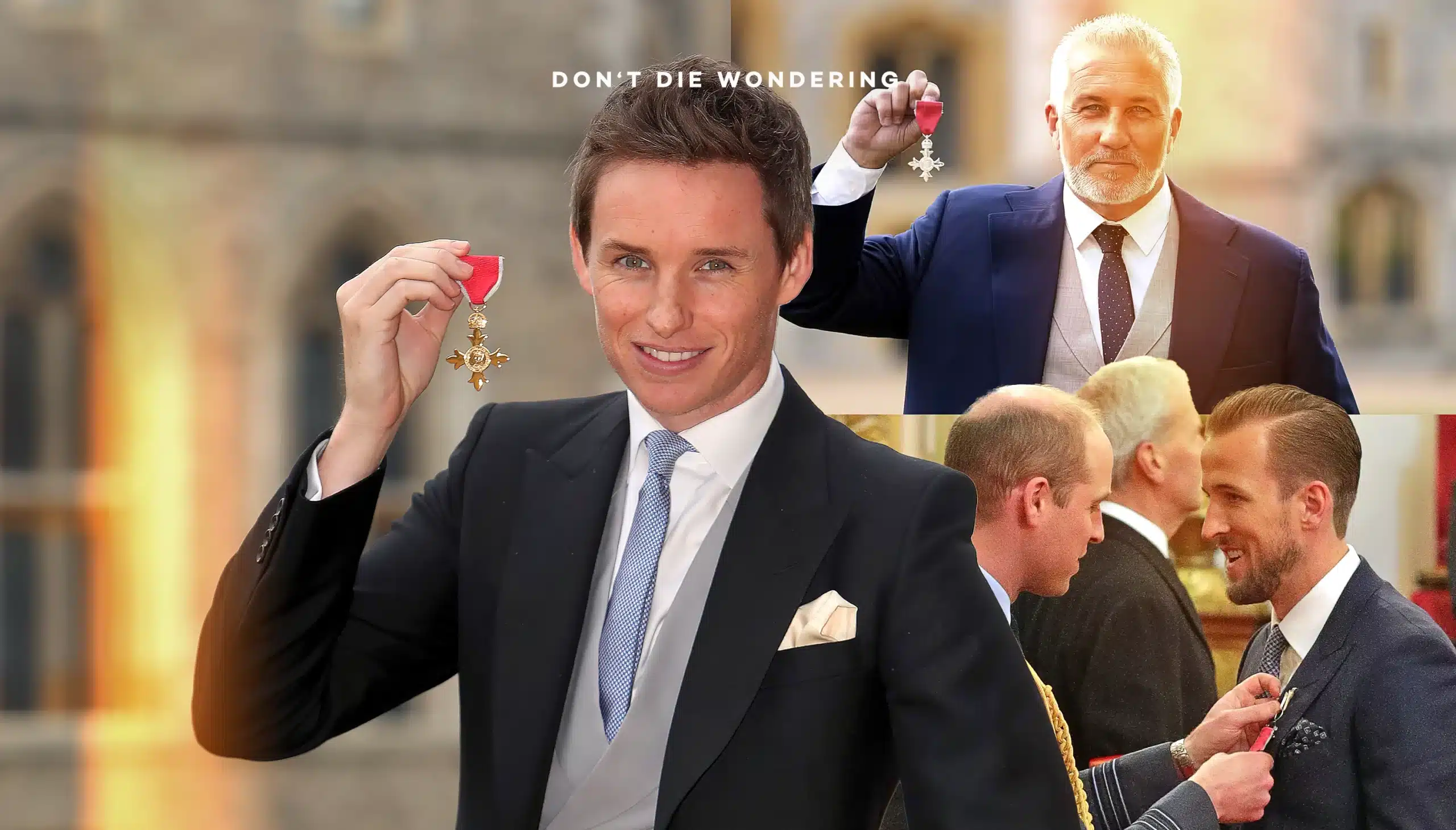MBE, OBE, and CBE are acronyms that might sound cryptic, but carry immense weight in the world of British distinction.
The British social landscape is adorned with a unique system of honours, recognizing individuals who have made exceptional contributions. The MBE, OBE, and CBE – these acronyms, though cryptic at first glance, hold immense prestige. Let’s delve into the history, hierarchy, and significance of these coveted titles.

Born from Wartime Valor
The story begins amidst the turmoil of World War I. In 1917, King George V sought a way to acknowledge acts of bravery that extended beyond the battlefield. Thus, the Orders of the British Empire were established, initially honoring military personnel. Recognizing the evolving landscape of British society, the system soon embraced the contributions of civilians, transforming into a multifaceted recognition program.
The Honours Ladder
Within this system exist three distinct titles, each representing a different level of distinction. The MBE, or Member of the British Empire, stands as the entry point, acknowledging those who have made a remarkable impact at the community level. The OBE, or Officer of the Order of the British Empire, occupies the middle rung, celebrating distinguished service in the arts, sciences, or public service. Finally, the CBE, or Commander of the Order of the British Empire, sits at the pinnacle, reserved for those who have made significant contributions on a national or regional scale.
The Path to Prestige
Receiving one of these esteemed honours is an acknowledgement of unwavering dedication, not self-promotion. Nominations typically come from peers, organizations, or even the public, highlighting the nominee’s achievements and influence. A rigorous selection process then follows, overseen by expert committees, ensuring only the most deserving individuals are bestowed with these prestigious titles.
A Gallery of Greats
British history is brimming with luminaries who have been honoured with these titles. From the world of entertainment, icons like Sir Elton John, Dame Judi Dench, and Sir Ian McKellen have been recognized for their cultural contributions. In science and academia, Professor Stephen Hawking and Sir David Attenborough stand as testaments to knowledge and enlightenment. The public service and philanthropic arenas boast figures like Sir Richard Branson and Dame Emma Thompson, who exemplify compassion and altruism.
An Enduring Legacy
As the British honours system evolves, it remains a cornerstone of recognising excellence, service, and meritocracy. It’s a testament to those who have dedicated their lives to making a difference, leaving an indelible mark on history. In a world of uncertainty, these honours serve as guiding lights, illuminating the path towards a brighter future grounded in inclusivity.
The Glimmering Threads
The MBE, OBE, and CBE are more than just acronyms. They are threads woven into the rich tapestry of British culture, celebrating those who dare to dream, strive, and serve. As we navigate the complexities of the modern world, let these honours serve as a reminder of the timeless values they represent: a celebration of achievement, a recognition of service, and a tribute to the enduring spirit of humanity.
This revised structure places the hierarchy and path to receiving these honours closer to the explanation of their meaning, creating a more logical flow. It also highlights the “gallery of greats” section to showcase the impact of these honours.


